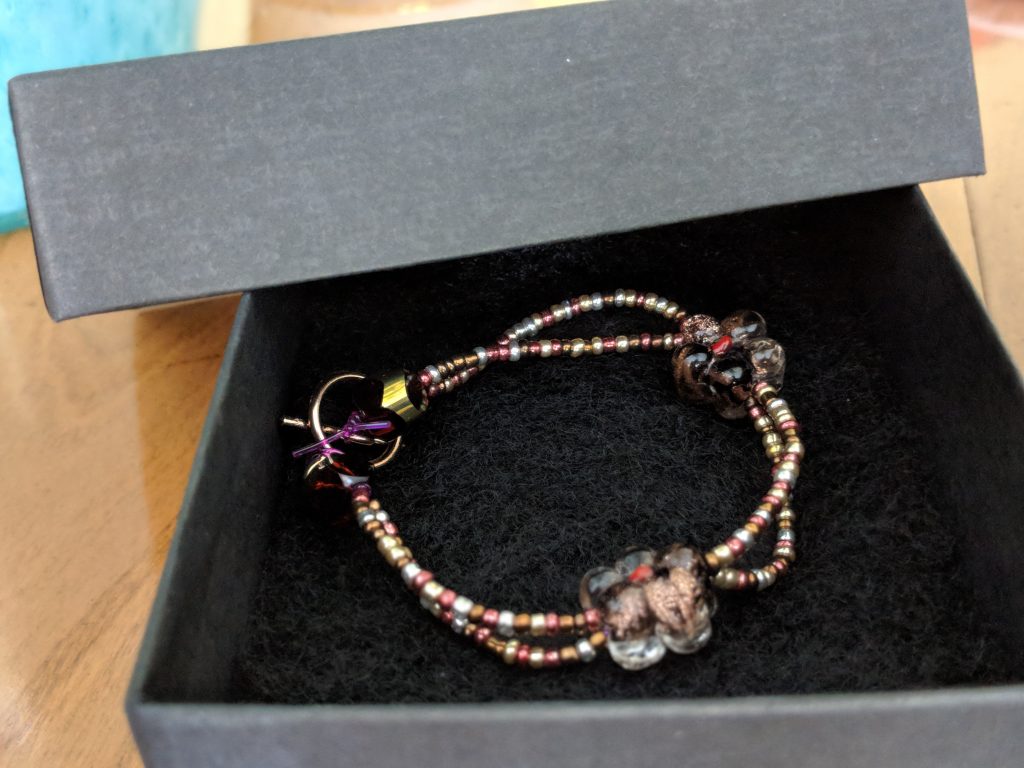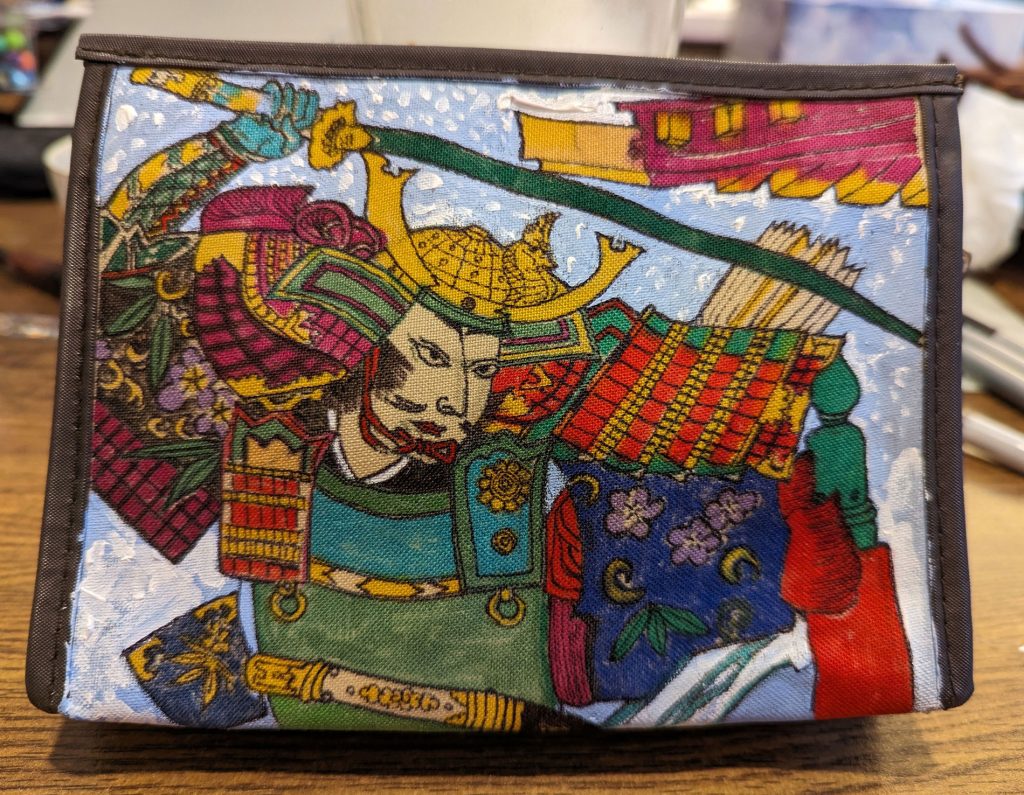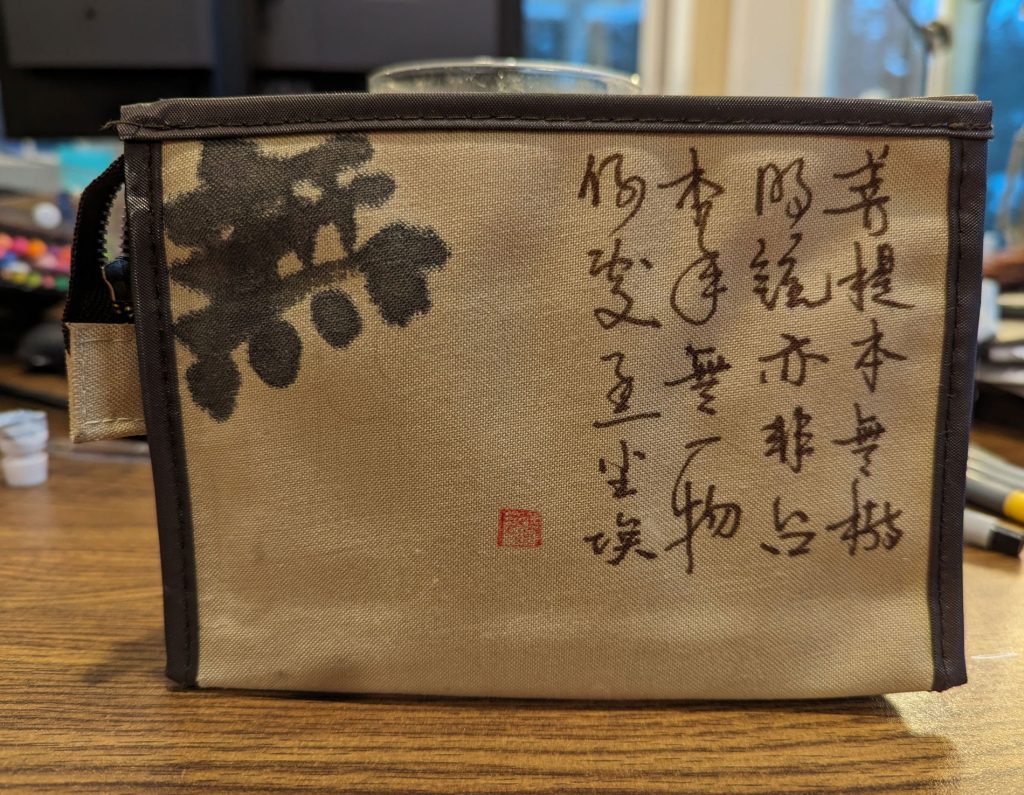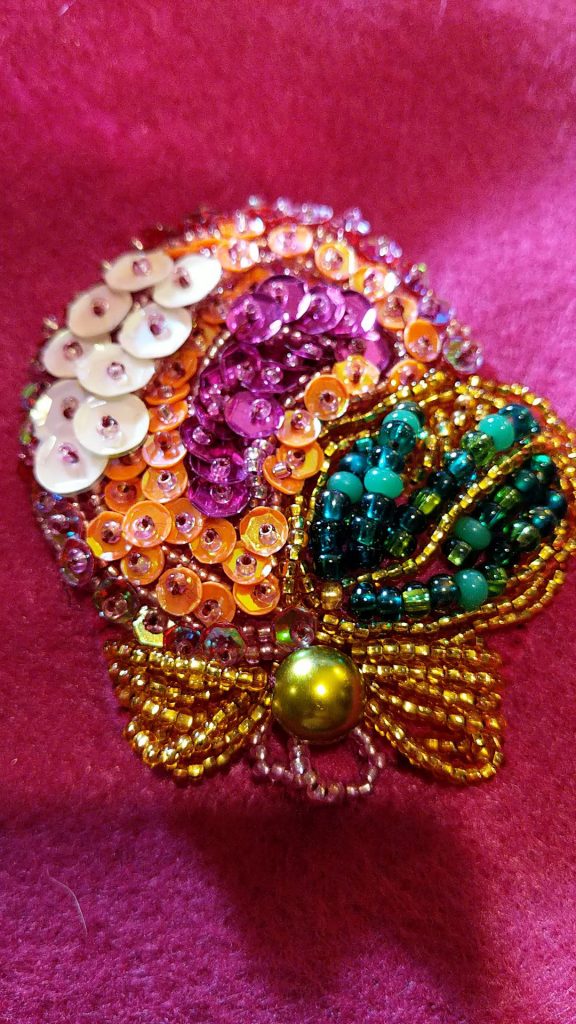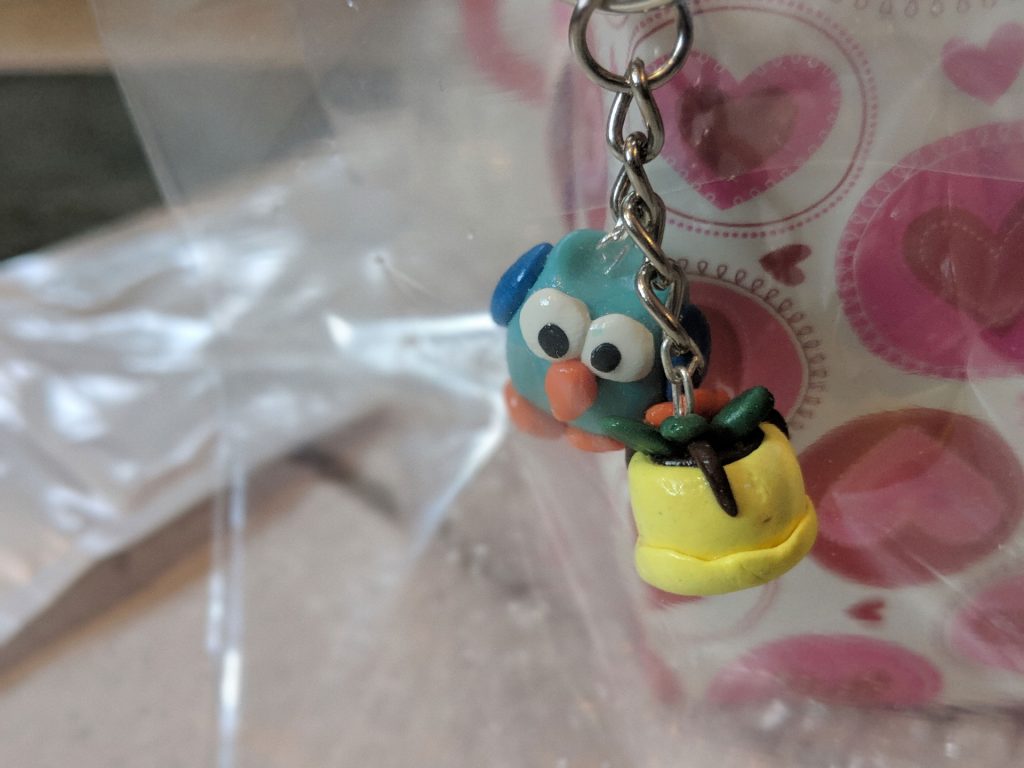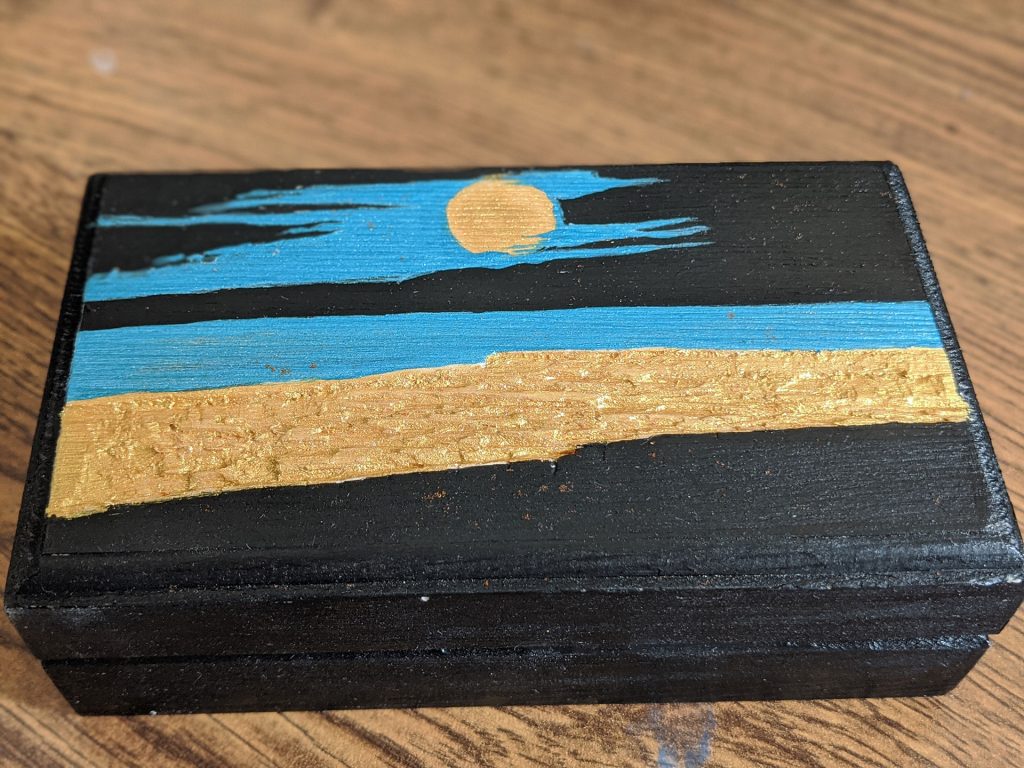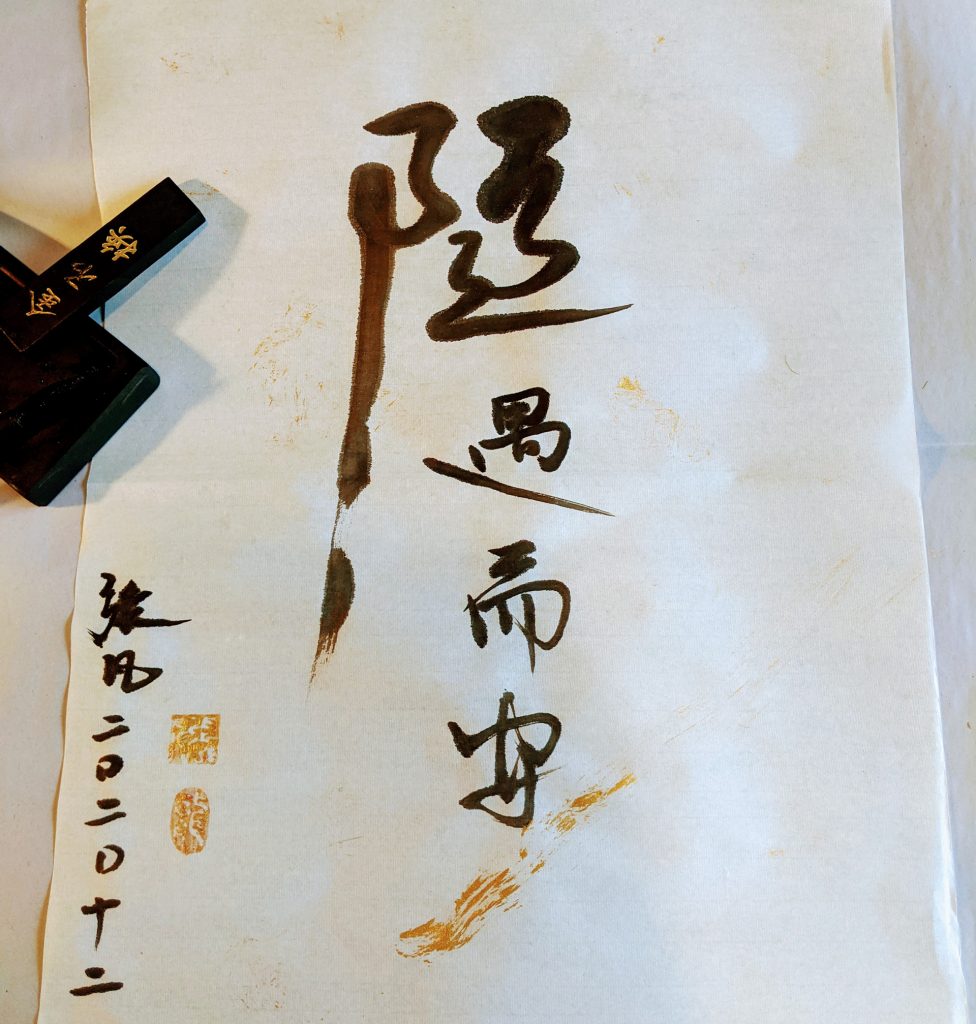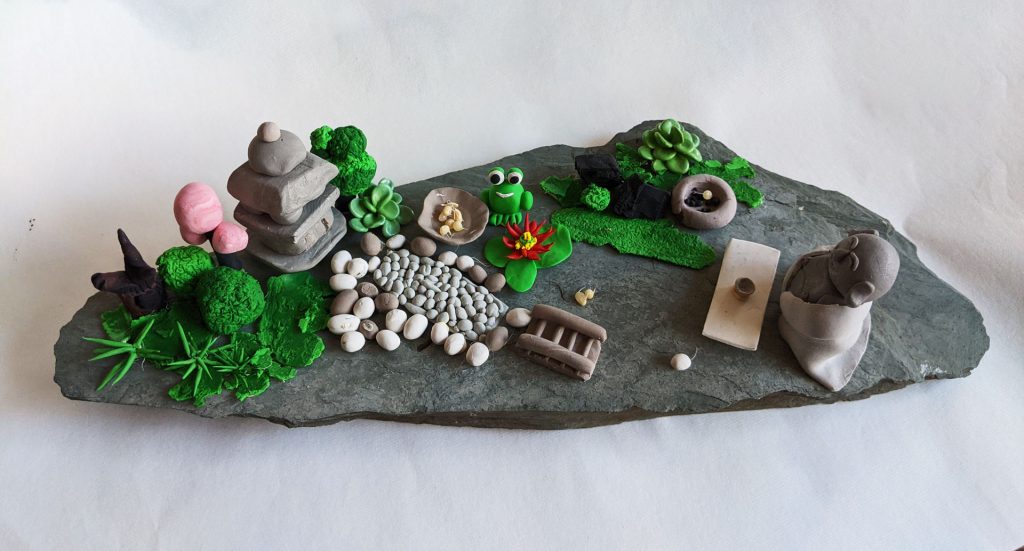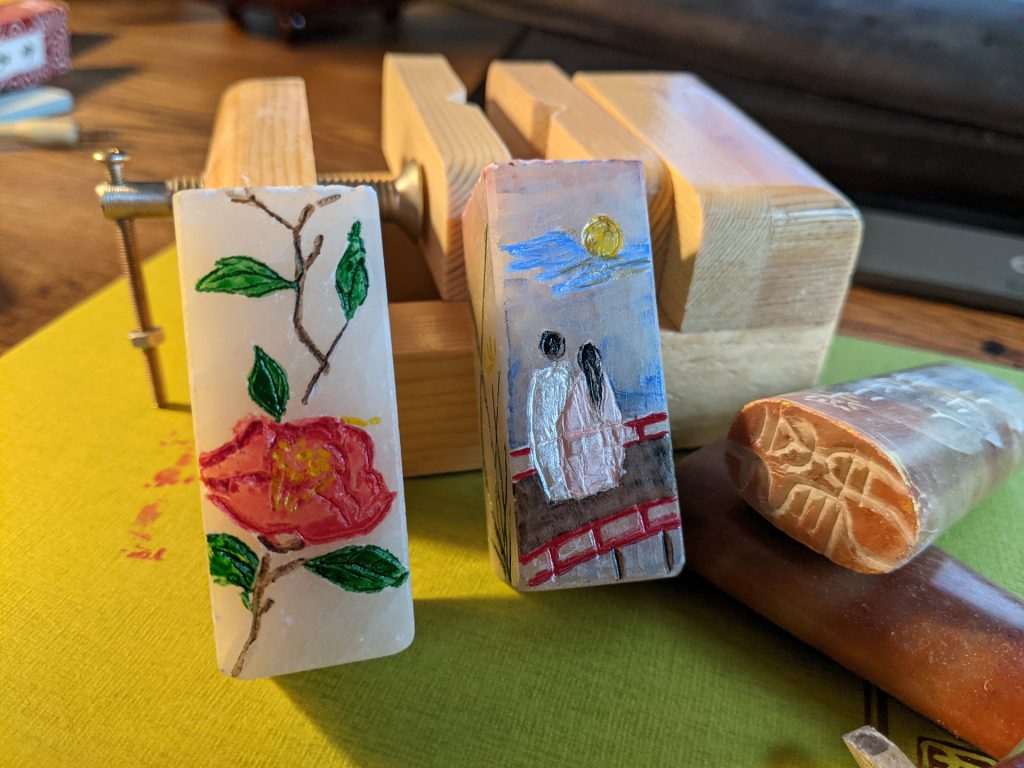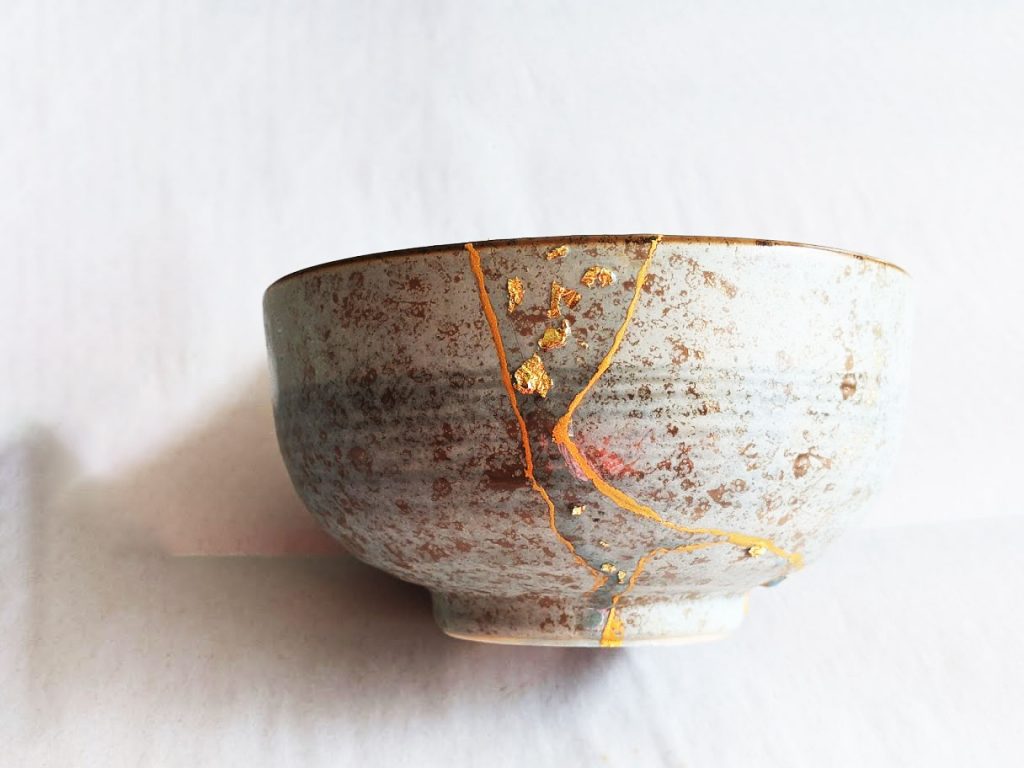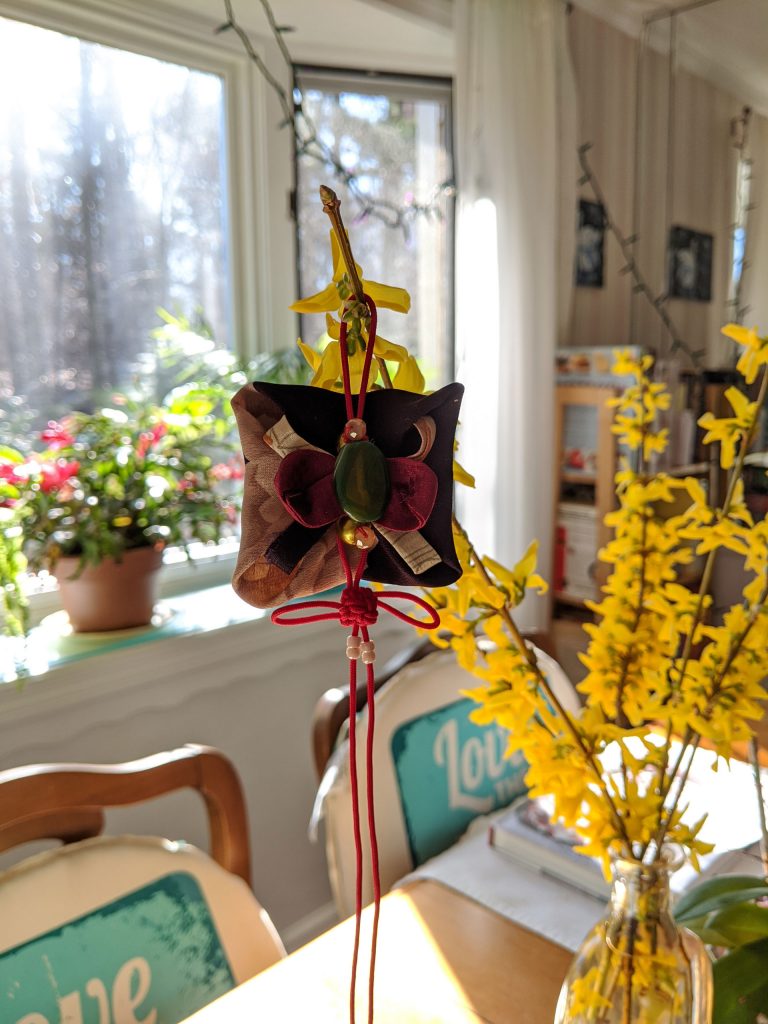Since the last time I had experience with drawing on the empty bottle of a Chanel perfume, I can no longer stop myself from doing so. My enthusiasm for Japanese Floating World Ukiyo-e, especially the depiction of feminine beauty, is the same as that for Chanel. So I got the idea to put all my love in one place. This time I have a Chanel Coco bottle. I covered it with air-dry clay and waited a week until it was completely dry. Then I drew my favorite “Three Beauties of Today” (the three beauties at the time, Tōji San Bijin) on it.
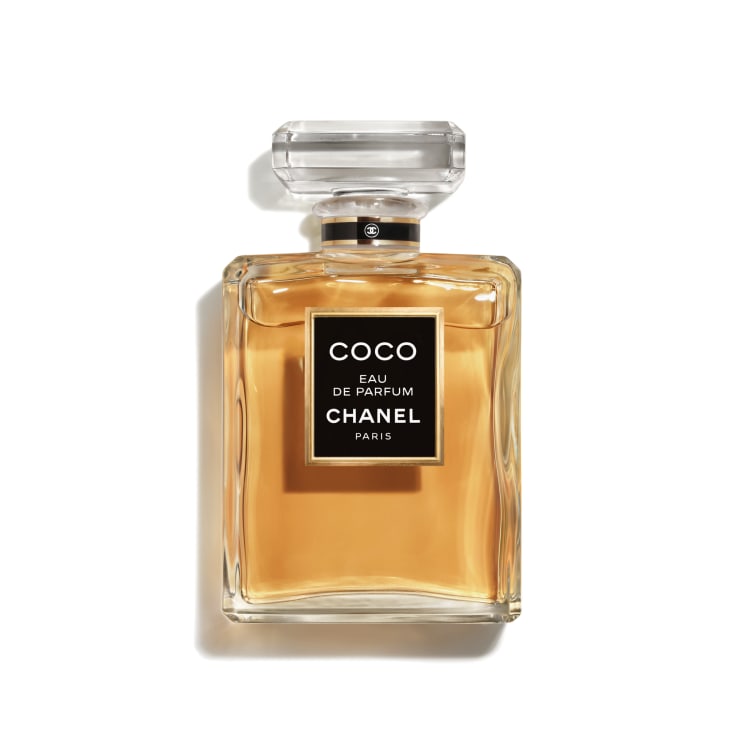
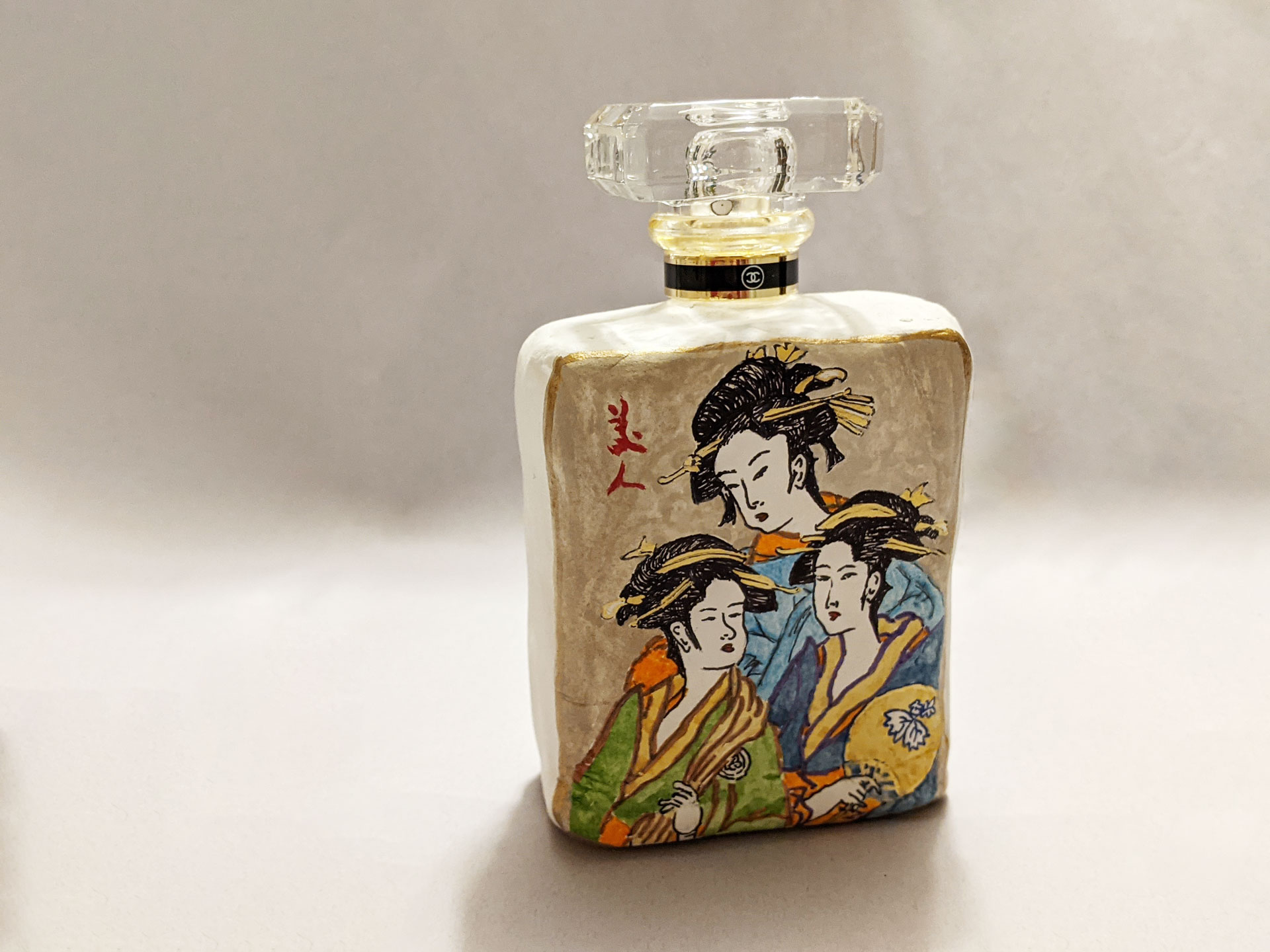
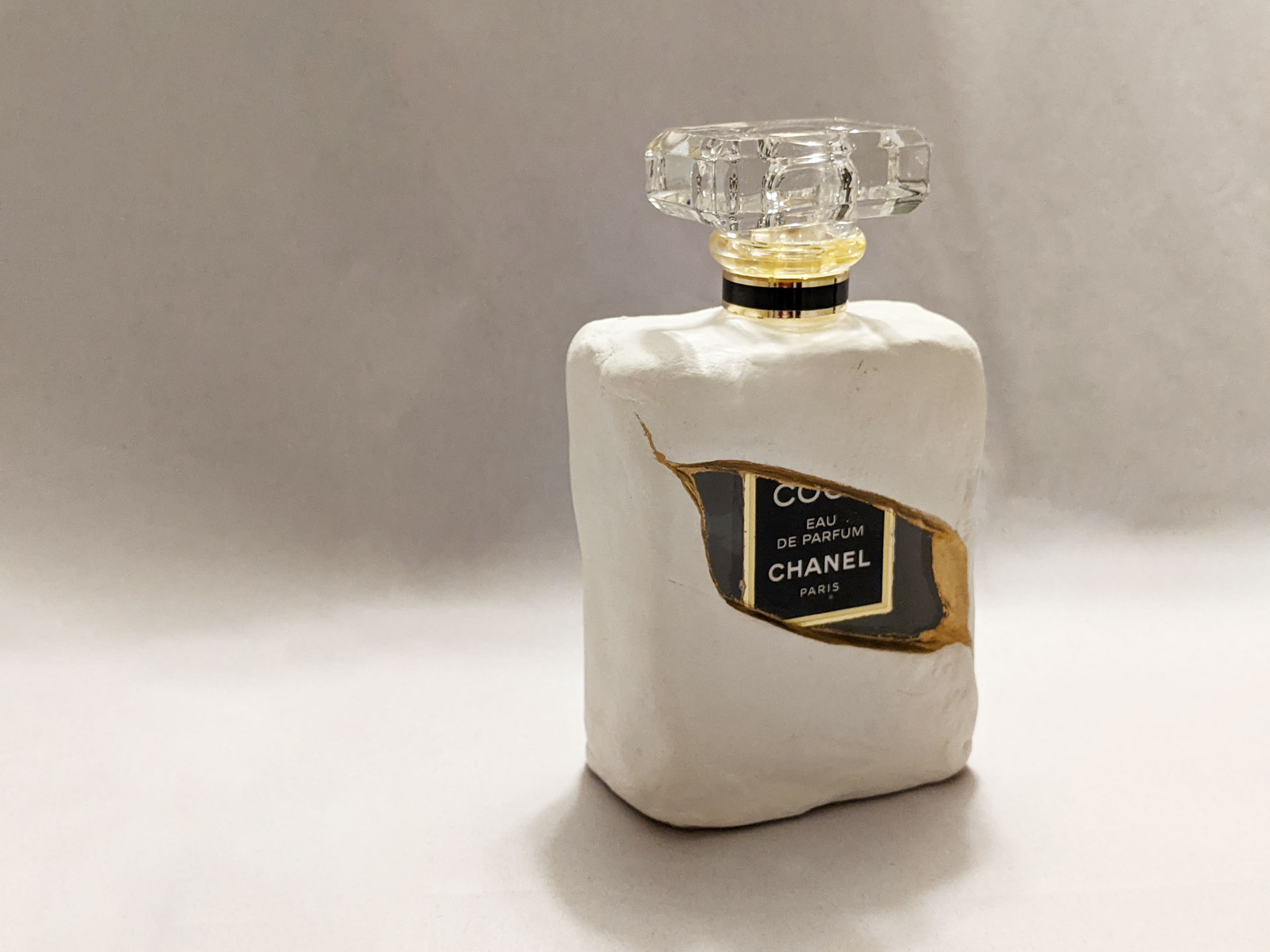
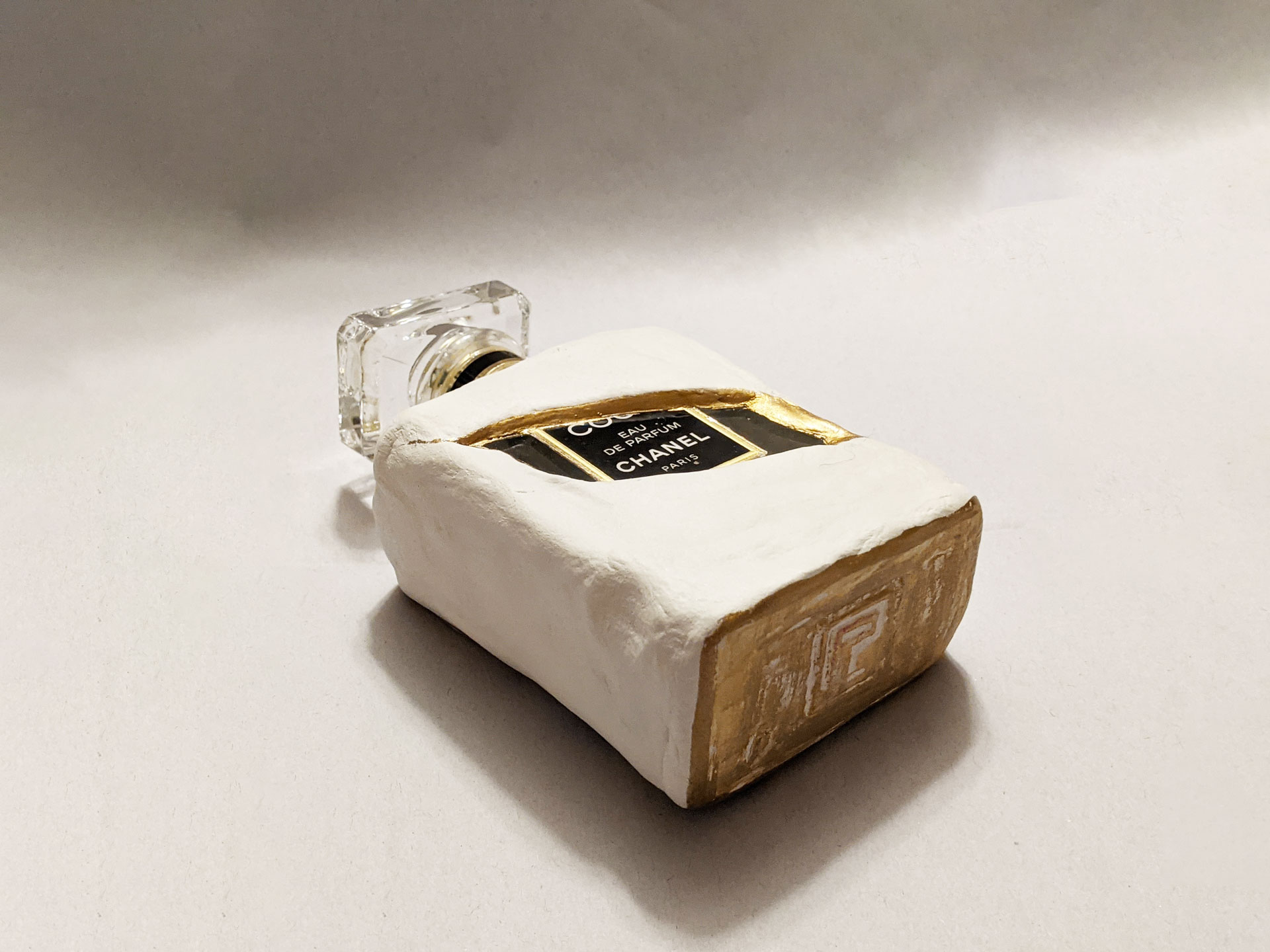
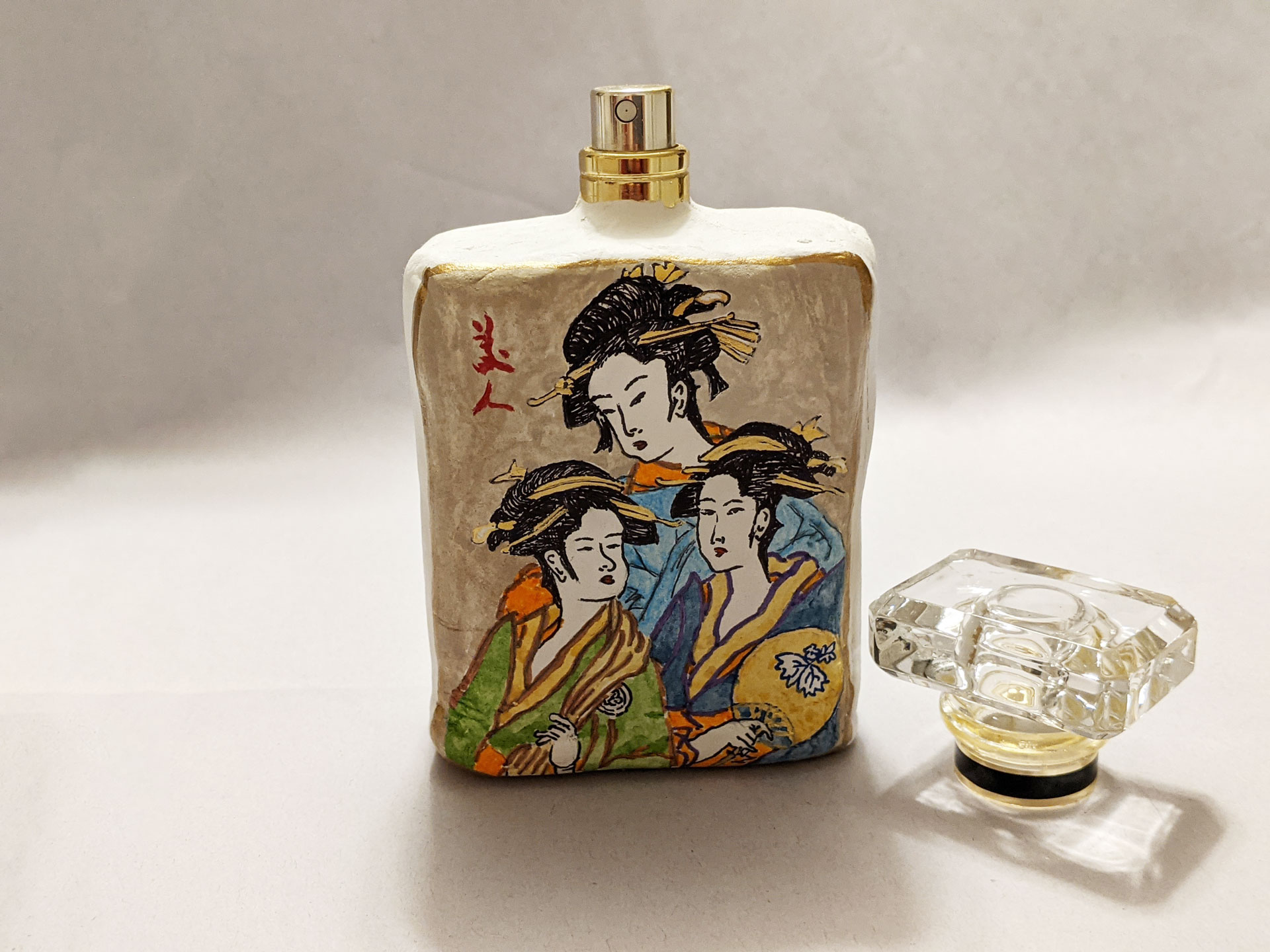
Learn more about Ukiyo-e
Three Beauties of the Present Day (当時三美人, Tōji San Bijin) is a nishiki-e colour woodblock print from c. 1792–93 by Japanese ukiyo-e artist Kitagawa Utamaro (c. 1753–1806). The triangular composition depicts the profiles of three celebrity beauties of the time: geisha Tomimoto Toyohina, and teahouse waitresses Naniwaya Kita and Takashima Hisa. The print is also known under the titles Three Beauties of the Kansei Era (寛政三美人, Kansei San Bijin) and Three Famous Beauties (高名三美人, Kōmei San Bijin).
Utamaro was the leading ukiyo-e artist in the 1790s in the bijin-ga genre of pictures of female beauties. He was known for his ōkubi-e, which focus on the heads. The three models in Three Beauties of the Present Day were frequent subjects of Utamaro’s portraiture. Each figure in the work is adorned with an identifying family crest. The portraits are idealized, and at first glance their faces seem similar, but subtle differences in their features and expressions can be detected—a level of realism at the time unusual in ukiyo-e, and a contrast with the stereotyped beauties in earlier masters such as Harunobu and Kiyonaga. The luxurious print was published by Tsutaya Jūzaburō and made with multiple woodblocks—one for each colour—and the background was dusted with muscovite to produce a glimmering effect. It is believed to have been quite popular, and the triangular positioning became a vogue in the 1790s. Utamaro produced several other pictures with the same arrangement of the same three beauties, and all three appeared in numerous other portraits by Utamaro and other artists.

